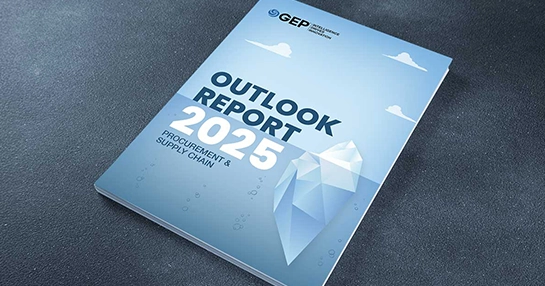
Intake and Orchestration in Procurement: A Strategic Shift
- Intake management simplifies procurement by capturing and streamlining stakeholder demands into intuitive workflows.
- Orchestration integrates systems, data, and processes to build strategic value across the source-to-pay (S2P) cycle.
- Although AI enhances intake as well as orchestration by automating tasks and providing insights, human expertise is essential for strategic impact.
June 19, 2025 | Procurement Software 5 minutes read
Procurement has undergone a complete transformation. Its goal is no longer restricted to just securing deals or slashing budgets. Its focus is now on creating value for the enterprise, connecting multiple systems, and helping enterprises navigate challenges.
Companies are now more focused on simplifying workflows and planning for long-term goals. This is where intake and orchestration step in, making procurement into a strategic asset.
As businesses face growing demands, there’s a demand for connected solutions. Let’s take a look how intake management and orchestration are reshaping procurement through the lens of the 2025 Annual ProcureCon CPO Report.
The Complexity Challenge
Procurement’s responsibilities have expanded significantly over years. It’s no longer solely about controlling costs; procurement now takes the responsibility of managing risks, ensuring sustainability, in order to ensure that broader organizational objectives are met.
With increased complexity, about 90% of procurement leaders struggle due to fragmented systems and scattered data. These issues slow down the decision-making process and make it harder to act decisively. The growing scope of procurement calls for a new approach to managing processes effectively and accelerate source-to-pay processes.
Ready for Growth? GEP Has the Answers
Transform your business with our AI-powered procurement and supply chain software and services
Navigating Key Obstacles
Disconnected systems have the tendency to create broken workflows, limiting visibility into operations. Data spread across multiple platforms makes it tough to gain clear insights, leading to inconsistent processes that eventually cause delays. Manual tasks further waste time that could be better spent elsewhere.
When tools get complex, they discourage user adoption, especially those outside procurement roles. Industry research shows 70% of supply chain leaders expect sourcing challenges to grow over the next two years. These hurdles demand solutions that unify and simplify.
Intake Management: The Starting Point
Intake management acts as the gateway to better procurement. It takes stakeholder requests and organizes them into clear, actionable workflows. Think of it as the first step in connecting a business need to the procurement process.
The purpose of intake management is to help everyone use the system easily, even for those who are not exactly familiar with procurement. This matters more than ever as sourcing responsibilities cascade across organizations.
Expanding Sourcing Access
Experts predict that by 2027, 40% of sourcing tasks will be handled by non-procurement staff. And these non-procurement employees will need tools that are straightforward to work with and easy to implement. A strong intake management reduces confusion, ensures that requests match company priorities, and paves the way for a smooth conclusion. It’s about opening up procurement without losing control.
Total Orchestration: A Broader Vision
Intake is just the first piece of the puzzle. Total procurement orchestration brings together people, processes, and tools to achieve better results across the entire source-to-pay (S2P) cycle. Orchestration, by connecting isolated systems, pulling data together and automating repetitive tasks, creates a system that works as one.
A company’s approach should cover everything from intake to full source-to-pay processes and even tie into broader business networks, linking suppliers and external systems.
Building a Connected System
Orchestration can tackle the biggest pain points head on. It breaks down silos to improve visibility and pulls data into one place for clearer insights. Automation handles time-consuming tasks and streamlines processes to boost efficiency. This is a unified approach that enables procurement to grow and deliver actual, measurable results.
Serving Different Roles
Procurement orchestration’s strength lies in its ability to meet the needs of the people positioned both vertically and horizontally in an enterprise.
A casual buyer might want quick suggestions for event vendors, but a sourcing manager will need detailed spending data to work with fewer but better suppliers. Legal teams focus on checking vendor risks, while executives want clear reports on supplier diversity. Orchestration provides tailored tools and automated processes to support everyone, ensuring smooth interactions across the board.
Improving User Interaction
For occasional users, orchestration offers simple, user-friendly interfaces. For procurement experts, it provides deep insights and tools for decision-making. This balance ensures that everyone, from warehouse managers to top executives, can work seamlessly with procurement systems effectively.
Technology’s Growing Impact
Technology is changing how procurement works. The field has evolved from standalone tools to integrated source-to-pay systems, and now to orchestration powered by advanced tech. These tools enable natural, conversational interactions, better predictions, and smarter choices.
Tech-Driven Progress
New technology streamlines complex tasks and provides forward-facing insights. It aligns with user needs, links data points, and supports better decisions. Advancements in hardware and cloud systems make this possible, which in turn helps procurement deliver more business value.
The Role of Advanced Tools
Advanced tech tools such as AI have started playing a key role, but they aren’t the complete picture. Although these tools simplify tasks, predict outcomes, and even offer insights, human intelligence and judgment remain crucial.
Procurement professionals need their own expertise to align with business goals and build strong partnerships. According to research by the Everest Group, combining technology with human expertise leads to the best outcomes.
What's Total Procurement Orchestration — and Why Should You Care?
Discover how to optimize spend and create a frictionless procurement experience in this GEP Bulletin
Looking Ahead and Unlocking New Possibilities
Procurement’s future lies in creating value across the board. Demand orchestration will make user interactions smoother. Sustainability efforts will align sourcing with environmental and social goals, and procurement’s future lies in creating value across the board. Demand orchestration will make user interactions smoother. Risk management will use real-time insights to stay ahead of threats. Strategic planning will tie procurement to long-term business objectives, fostering stronger partnerships and driving lasting impact.
Businesses should chalk out plans that focus on the types of procurement intake and orchestration that actually fit their goals. Training teams will need to take on strategic roles as technology will handle routine tasks. And with this adjusted collaboration, risk management, as well as sustainability efforts, procurement can spark innovation.
The shift toward intake and orchestration (I&O) solutions has already started. As global challenges grow, procurement will play a key role in solving them.
The focus isn’t just on fixing today’s problems. It is on building a future where procurement drives growth and delivers meaningful value.
FAQs
What is the intake process?
The intake process is the initial step where requests are captured and organized into structured workflows. As the entry point, intake ensures that demands align with business priorities and at the same time eases up the procurement process. It also enables non-procurement teams to engage intuitively. And the way intake streamlines requests, it sets the stage for efficient downstream processes like sourcing and purchasing, enhancing visibility and control.
What is orchestration strategy?
Orchestration strategy in procurement aims to align people, processes, and technology in order to optimize outcomes across the source-to-pay cycle. Orchestration helps procurement organizations removes silos from within and between systems to unify data and automate workflows for enhanced efficiency and visibility. It also connects intake management and disparate processes to transform procurement into one strategic function.



